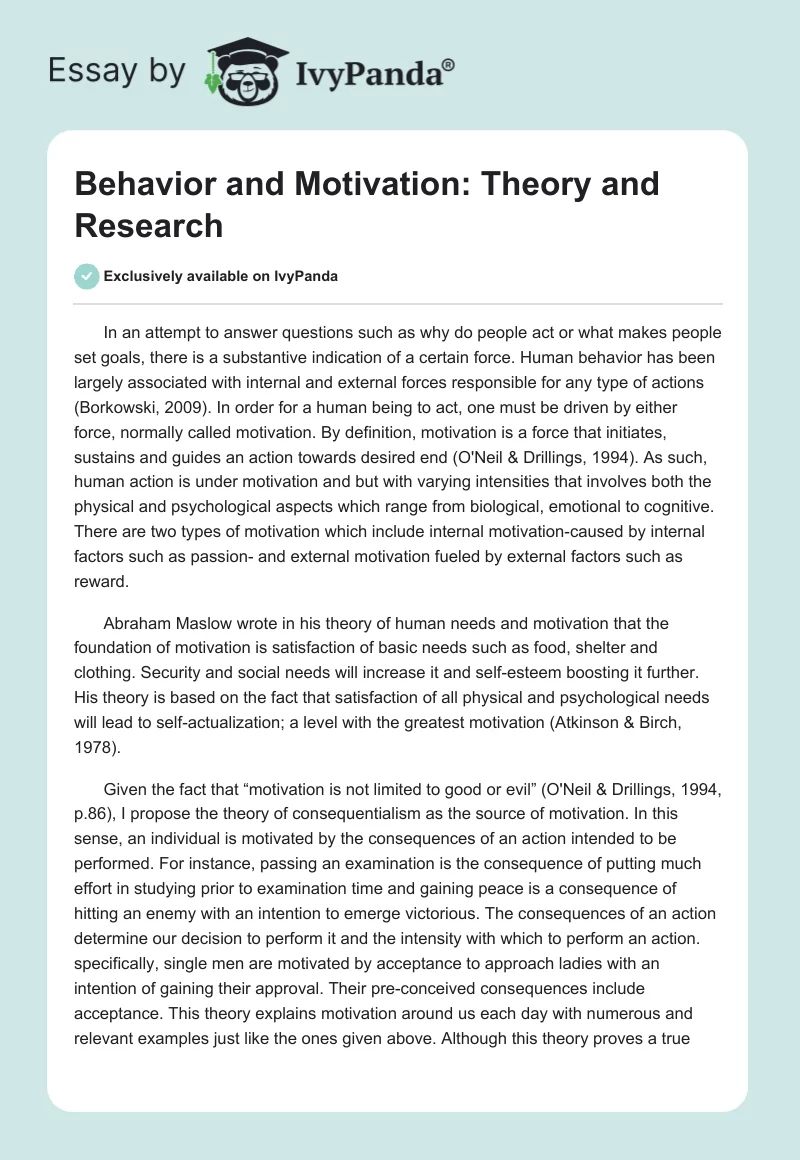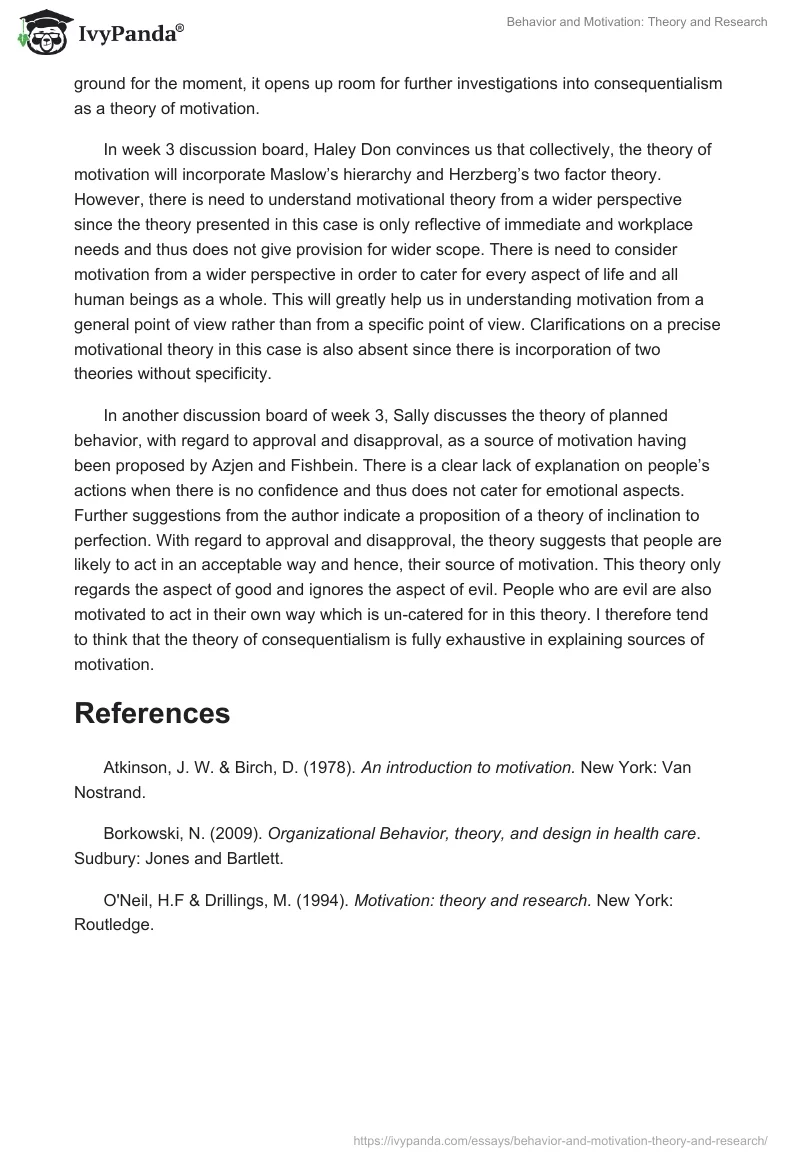In an attempt to answer questions such as why do people act or what makes people set goals, there is a substantive indication of a certain force. Human behavior has been largely associated with internal and external forces responsible for any type of actions (Borkowski, 2009). In order for a human being to act, one must be driven by either force, normally called motivation. By definition, motivation is a force that initiates, sustains and guides an action towards desired end (O’Neil & Drillings, 1994). As such, human action is under motivation and but with varying intensities that involves both the physical and psychological aspects which range from biological, emotional to cognitive. There are two types of motivation which include internal motivation-caused by internal factors such as passion- and external motivation fueled by external factors such as reward.
Abraham Maslow wrote in his theory of human needs and motivation that the foundation of motivation is satisfaction of basic needs such as food, shelter and clothing. Security and social needs will increase it and self-esteem boosting it further. His theory is based on the fact that satisfaction of all physical and psychological needs will lead to self-actualization; a level with the greatest motivation (Atkinson & Birch, 1978).
Given the fact that “motivation is not limited to good or evil” (O’Neil & Drillings, 1994, p.86), I propose the theory of consequentialism as the source of motivation. In this sense, an individual is motivated by the consequences of an action intended to be performed. For instance, passing an examination is the consequence of putting much effort in studying prior to examination time and gaining peace is a consequence of hitting an enemy with an intention to emerge victorious. The consequences of an action determine our decision to perform it and the intensity with which to perform an action. specifically, single men are motivated by acceptance to approach ladies with an intention of gaining their approval. Their pre-conceived consequences include acceptance. This theory explains motivation around us each day with numerous and relevant examples just like the ones given above. Although this theory proves a true ground for the moment, it opens up room for further investigations into consequentialism as a theory of motivation.
In week 3 discussion board, Haley Don convinces us that collectively, the theory of motivation will incorporate Maslow’s hierarchy and Herzberg’s two factor theory. However, there is need to understand motivational theory from a wider perspective since the theory presented in this case is only reflective of immediate and workplace needs and thus does not give provision for wider scope. There is need to consider motivation from a wider perspective in order to cater for every aspect of life and all human beings as a whole. This will greatly help us in understanding motivation from a general point of view rather than from a specific point of view. Clarifications on a precise motivational theory in this case is also absent since there is incorporation of two theories without specificity.
In another discussion board of week 3, Sally discusses the theory of planned behavior, with regard to approval and disapproval, as a source of motivation having been proposed by Azjen and Fishbein. There is a clear lack of explanation on people’s actions when there is no confidence and thus does not cater for emotional aspects. Further suggestions from the author indicate a proposition of a theory of inclination to perfection. With regard to approval and disapproval, the theory suggests that people are likely to act in an acceptable way and hence, their source of motivation. This theory only regards the aspect of good and ignores the aspect of evil. People who are evil are also motivated to act in their own way which is un-catered for in this theory. I therefore tend to think that the theory of consequentialism is fully exhaustive in explaining sources of motivation.
References
Atkinson, J. W. & Birch, D. (1978). An introduction to motivation. New York: Van Nostrand.
Borkowski, N. (2009). Organizational Behavior, theory, and design in health care. Sudbury: Jones and Bartlett.
O’Neil, H.F & Drillings, M. (1994). Motivation: theory and research. New York: Routledge.


